Featured Snippets Guide
Did Google's snippet types start to get confusing when various terms like rich snippets, rich cards, schema markings, JSON-LD, and featured snippets started to float around? It should not, because there are only two different types of Google Snippets that we must always keep in mind. One of them is rich snippets and the other is featured snippets, which is what we are planning to focus on in our article. We can also include standard snippets among these.
What is Google Snippet?
What does Snippet mean? For starters, every single search result on the search result listing page gives a summary of what the page is talking about. What we like to say SERP view among ourselves - is called “Google Snippet. At this point, we would like to remind that the snippet also means “Snipped piece with a scissor” or “ small piece ”.

Rich Snippets, as you can see in the Amazon example below, enrich the SERP appearance by the content we have listed, with the extra information they contain and thus increase clickability.

If you also want to achieve a similar result by applying a few optimizations to your pages, we can take you to our page of Schema Optimization Guide. While listing in search results with a rich snippet is quite easy if done correctly, when it comes to Featured Snippets, things become a bit more complicated.
What is Featured Snippets?
Featured Snippets, or snippet that appears above search results, is a list of pages that can fully respond to the query of users searching on Google, in a separate block above the first row in the search results. However, when certain queries are made, there is a summary of the response from the page, the link to the page, the title, and the URL appear to users within the featured snippets block.
The position where Featured snippet is listed is called position zero. The fact that listing in the zero position is a pathway to much higher SEO visibility, increased traffic and click through rate has been revealed in many studies. Just below, we can see an example of a featured snippets that emerged as a result of the query “how to watch Game of Thrones” in Turkish. You have surely seen this kind of result before.
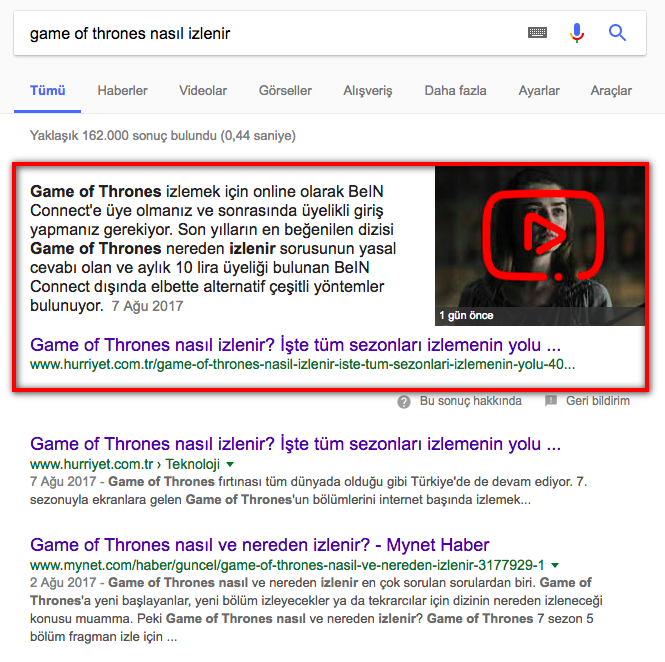
It is difficult to identify the methodology used by Google in determining the content to be presented to users in the zero position. What we know for sure is that, at this point, Google is rewarding pages with good content. In fact, all the SEO work needs to be done by taking the wishes of the users into consideration. So, is there anything we can do for a website to be listed in the zero position, which is the only thing better than being listed the first position? At this point, we need to evaluate the results and the clues given by the large sample cluster studies conducted for the zero position.
At this point, it is possible to say “Knowledge is power!” in a very cliche way.

You can find the results we have collected from the studies conducted since 2016 on Featured Snippets.
First of all, let’s provide information about the scope of the studies we have used in our research.
Getstat: It has been conducted by the analysis of URLs on 93K Featured Snippets and 346K unique URLs within the search result pages of 1M queries.
Ahrefs: URL’s in the 14M featured snippets obtained upon examination of the 112M query was utilized in the research.
Semrush: 1.6 featured snippets and 80M keywords were examined in the scope of the research.
-There are 3 different types of Featured snippets: Paragraph, list and table snippets. The appearance of these snippets in the search results is as follows: Paragraph:
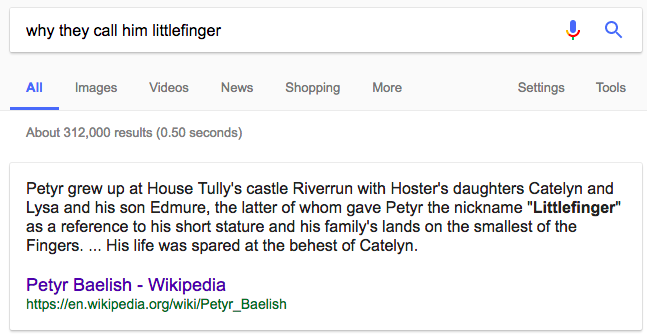
List:
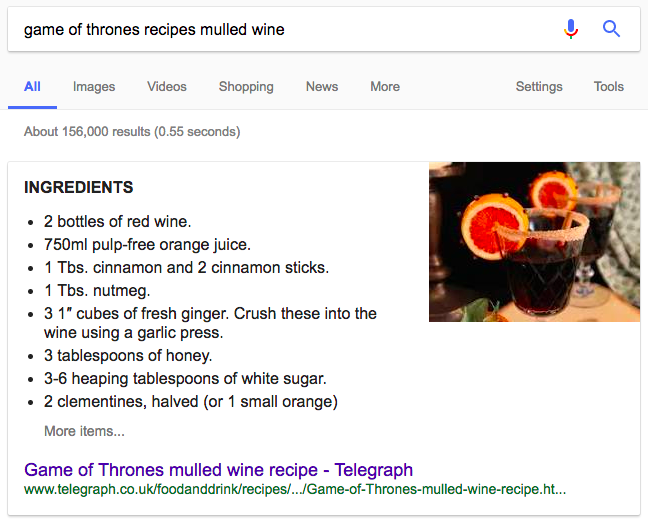
Table:
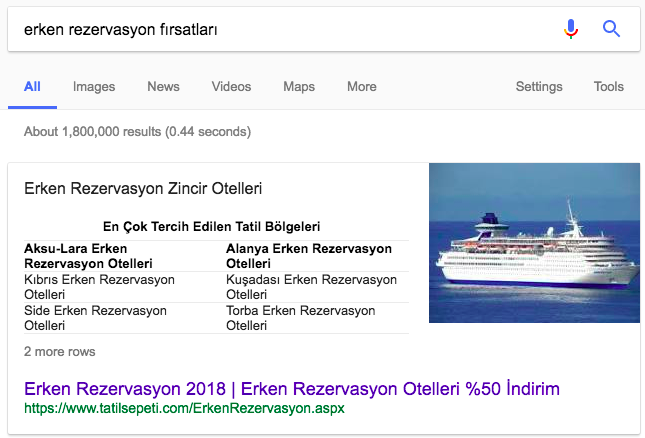
-The ratio of list and table snippets have risen since the second half of 2016:

-In Ahrefs' survey it has been seen that 12.29% of all queries returned with featured snippets.
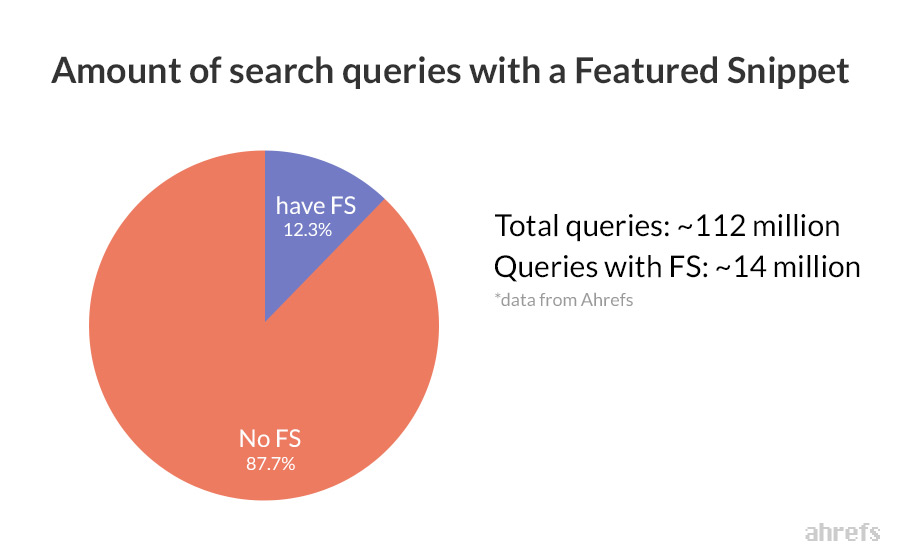
- We know that we don't have to perform in the first position to be featured in the Featured snippet. However, conducted researches conclude that we should definitely be listed on the first page. When we look at the following rates, we can say that we should target the first 5 positions for featured snippets.
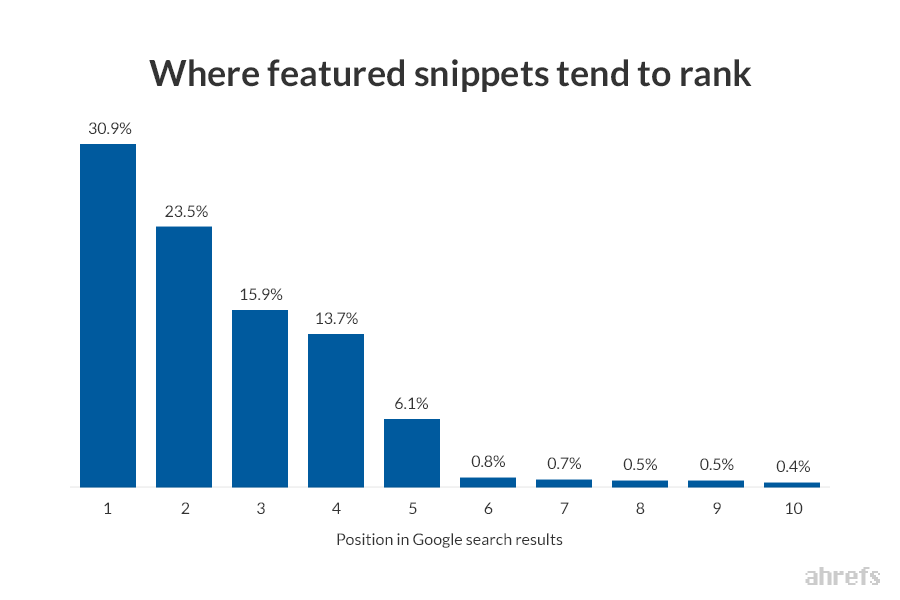
-Ahrefs' research concluded that the domain authority does make a big difference in being placed at the featured snippets. However, Ahrefs' backlink metrics only measure the overall quality and number of incoming links; The effects of factors such as anchor text or text content around the link have not been investigated. Semrush's research reveals that domain authority will be an important decision-making mechanism in situations where both pages have similar characteristics. For this reason, we can say that it is important for the page to have sufficient quantities of quality and industry-appropriate backlinks to be listed in the featured snippets.
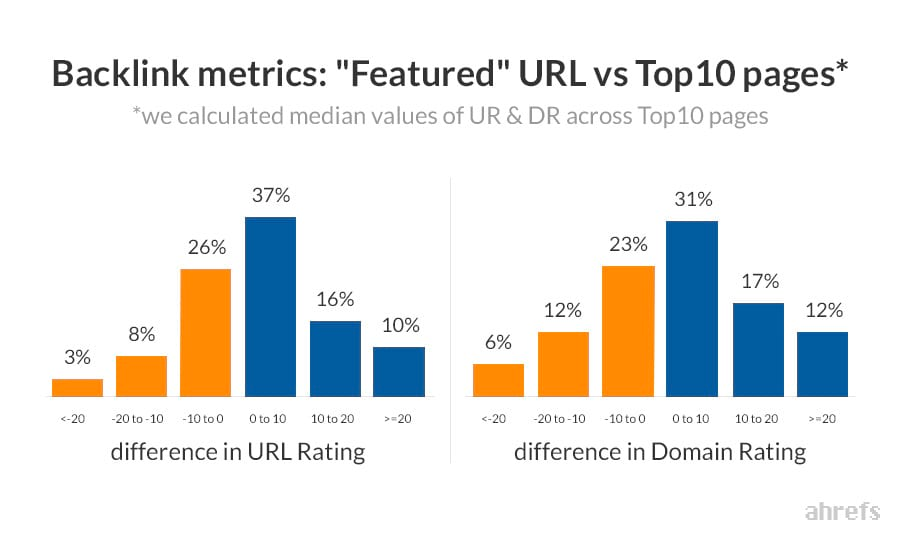
-In the Ahrefs database, the highest number of times a page has been listed in the zero position was in 4,658. For this reason, we believe that there is no limit to the maximum number of featured snippets that a page can list.
-After examining 2 million search queries, Ahrefs found that a greater proportion of position zero was filled with long-tailed keywords with low-volume. In fact, this is in line with Google's aim to prioritize qualified content creation. The number of long-tail keywords that can be targeted with a single content will always be limited.
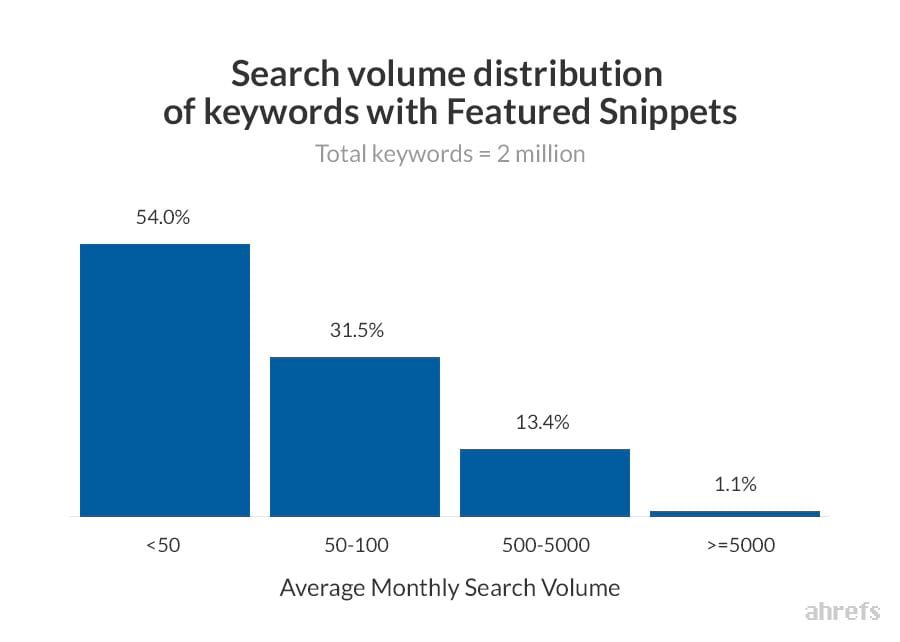
-Ahrefs also analyzed how often Featured Snippets changed over the 10K words which were analyzed most frequently in the United States and are in their database. According to the results of the analysis, it was found that 28% of the keywords featured snippets changed every four months, 11% changed four times in four months, 5% three times in four months, and 3% changed more than four times in four months. The featured snippets of 53% of the keywords remained unchanged over a four-month period.
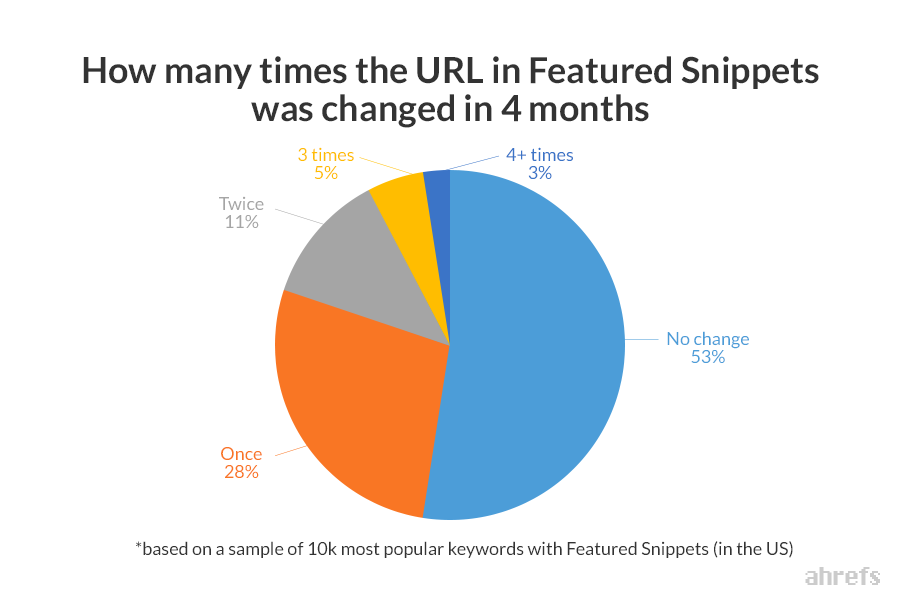
-According to SEMrush's review, 41.59% of all queries that have featured snippets can be considered questions.
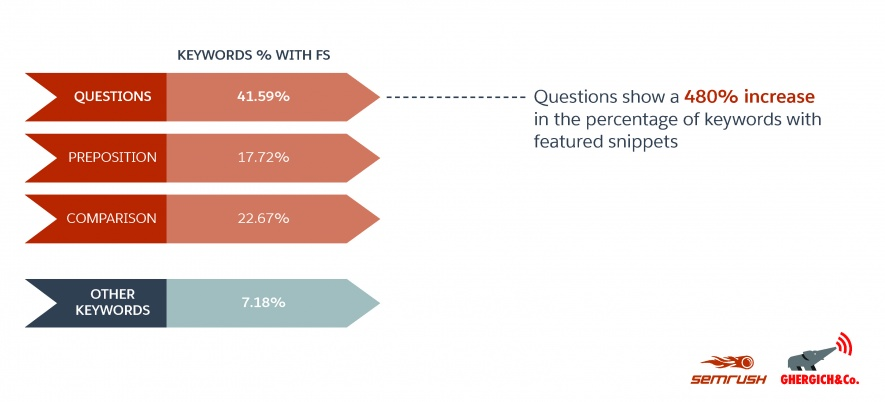
-One of the interesting results of SEMrush's research reveals that the length of text content shown in Featured Snippet is between 40 and 60 characters. It may be useful to observe this number of characters when preparing text for this purpose.
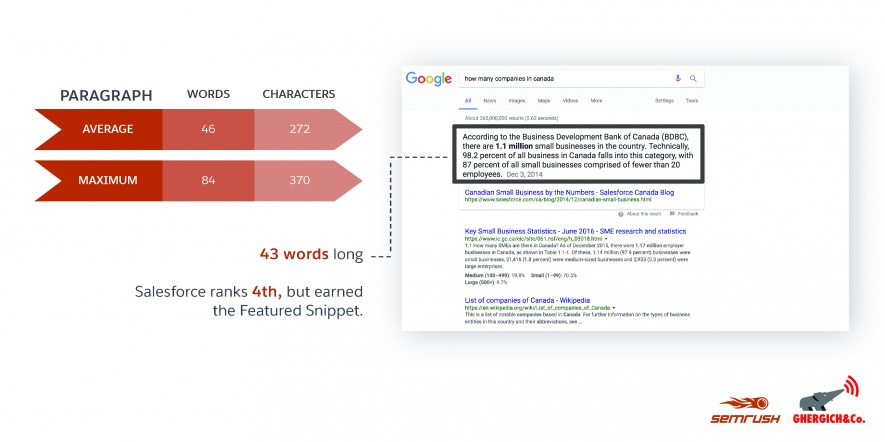
-According to SEMrush's research, 89% of the pages in the featured snippets have higher social interactions. In this context, we can say that it is very important to increase the social sharing of the pages. We think that this situation is more appropriate for our blogs.
-The mobile availability of sites and their suitability to the mobile priority index are also important for featured snippets. According to SEMrush data, 93% of the content listed in the featured snippets passes the mobile-friendly test. We recommend paying extra attention to the compatibility of our pages with the mobile priority index.
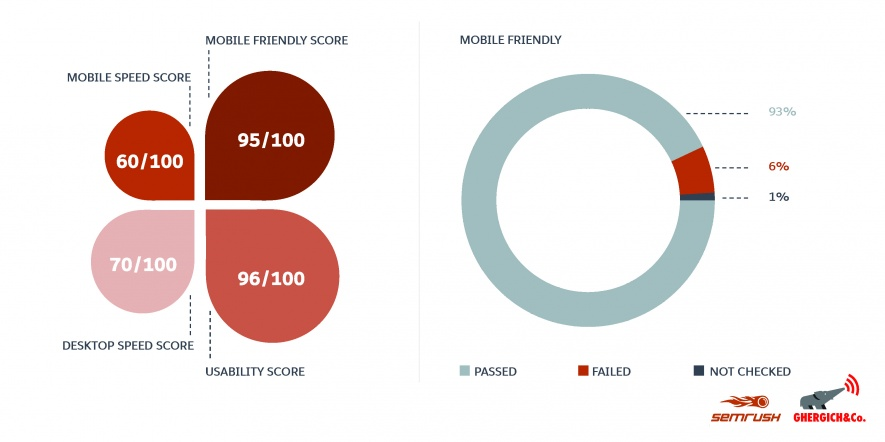
-We see that the number of pages that contain the Table tag is listed in the featured snippets 21.7% more than other pages. The content that we want to be included in Featured Snippets must be used in Table.
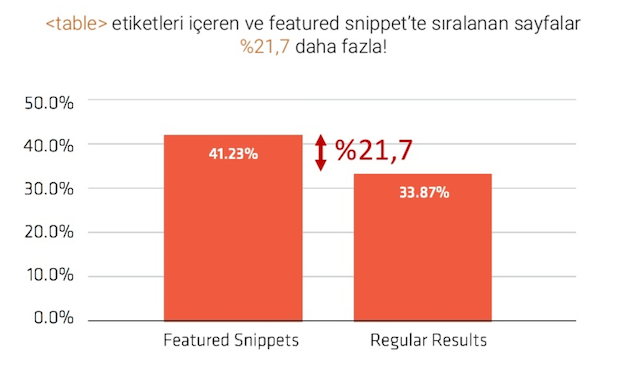
-The pages that include queries that users might search answers for in H1 and H2 tags number 21.2% more than the others. We think that we should pay attention to the proper use of H1 and H2 labels on our pages.
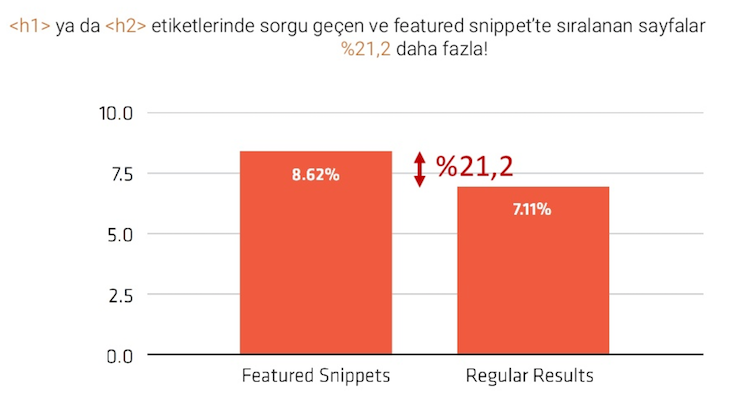
-We noticed that the pages with the ol tag and were ranked 41.6% higher than other pages in the featured snippets.
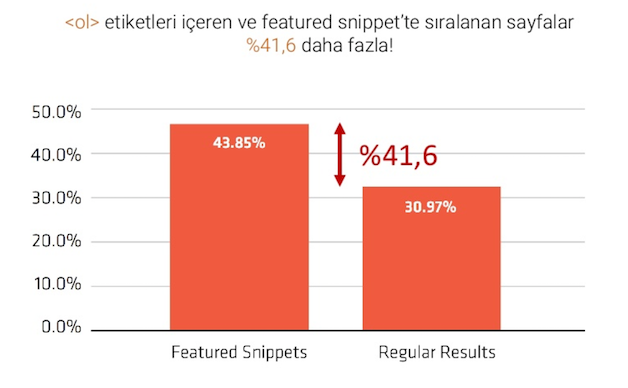
(The effect of both ol and ul tags was examined, but since ul is used in the navigation field, it does not give us a healthy comparison in this analysis.)) Again according to SEMrush's research within 92 queries a page with featured snippets stands out with the following features:
- 750 social sharing
- Mobile Compatible Page
- HTTPS transition: Yes
- Media Usage: Health-related visual with 12 different subtexts
- Length: 2100 words
- Heading Tags: h1-h6 (12 in total)
- Succinct content: average paragraph length 42 words
- List usage: 7 different list
- Number of backlinks: 48
So, in the light of all this information, let’s present to you our suggestions to place in Featured Snippet. -First of all, we need to target the top 5 positions with the pages we want to be featured in Featured Snippet. -We must discover long-tailed and question-quality queries within our sector. Thus, we can improve our pages to respond to such queries. In the category contents we write, we must ensure that the paragraph that responds to each query is 40-60 words long.
-We must include Table tags in the pages we want to include in the Featured Snippet. While doing so, we must also make use of tags such as <li> and <ol> .
-We can try to come to the fore with the content we will produce on the blog in long queries, namely long tailed. -Ideally, we need to improve the social interaction of our pages.
-We must check the mobile compatibility of our pages and we must eliminate the deficiencies on this side. -We need to examine how user-friendly the pages that we want to include in the Featured Snippets are and how much traffic they receive. In some cases, the only reason why we are not listed in position zero is that our pages are weak from the user's point of view.
Have you ever made an effort to take part in Featured Snippet, and how were your results? We'd love to hear it!!
Sources: https://getstat.com/blog/featured-snippets/ https://www.semrush.com/blog/large-scale-study-how-to-rank-for-featured-snippets-in-2018/ https://ahrefs.com/blog/featured-snippets-study/



















